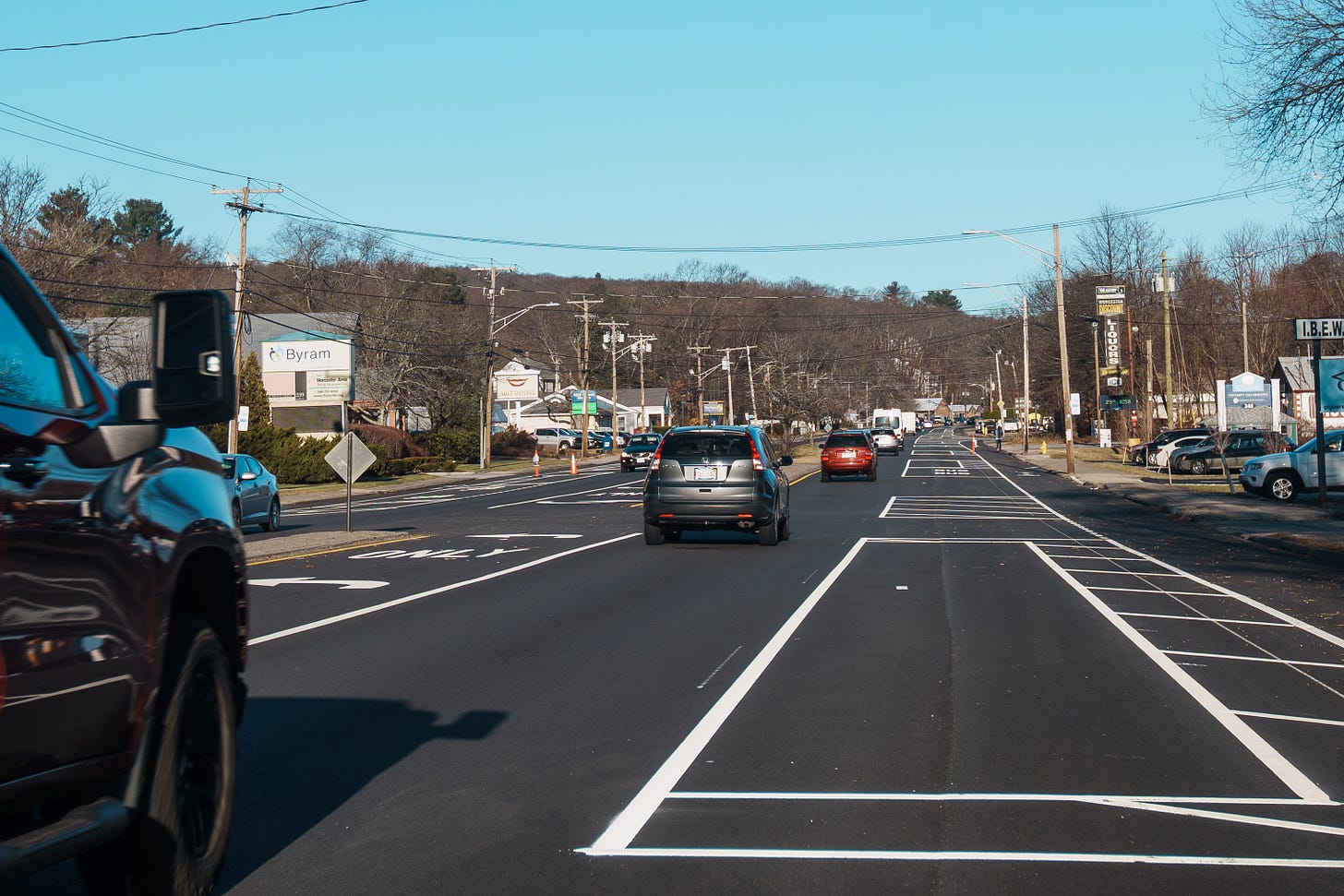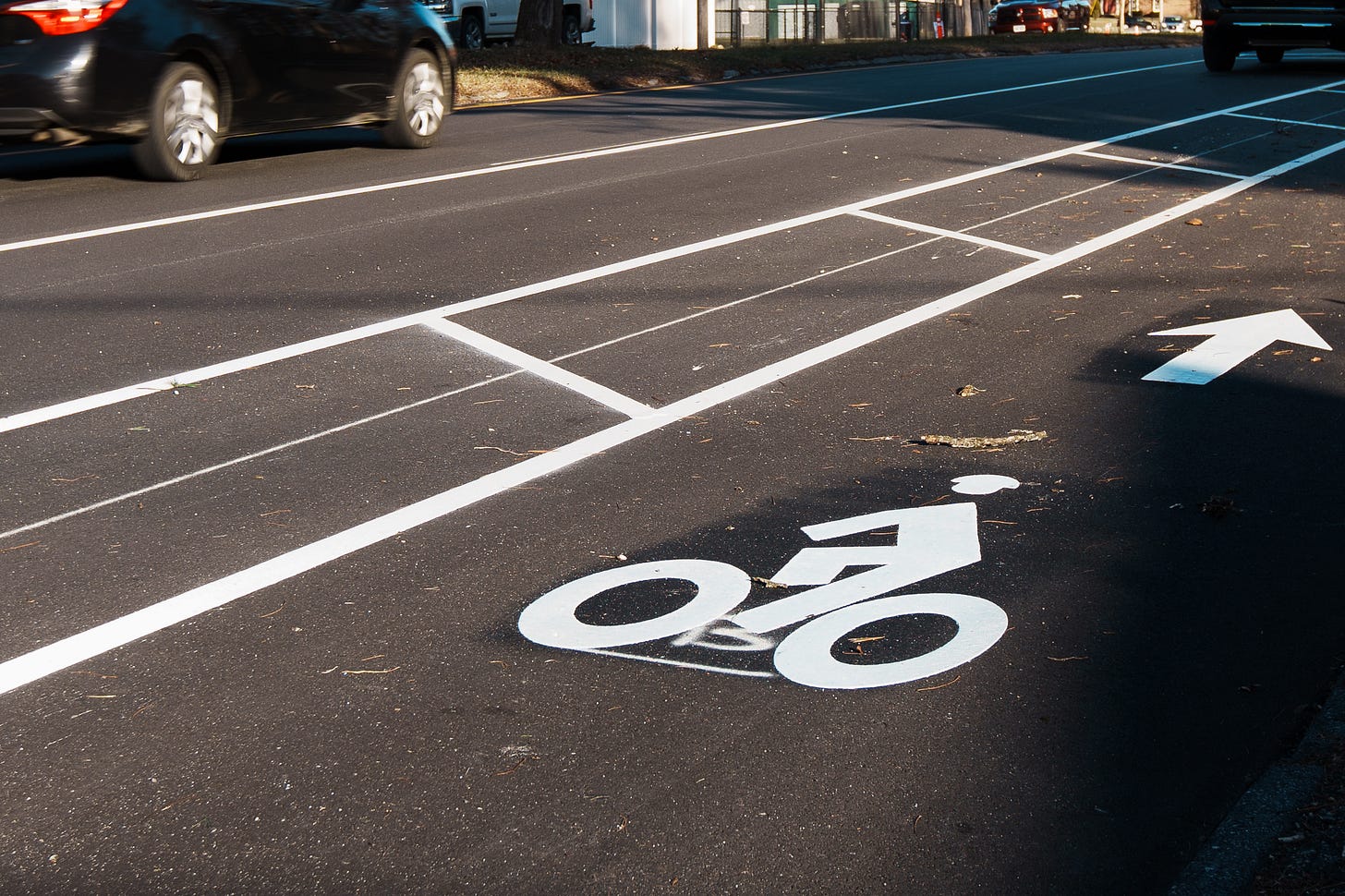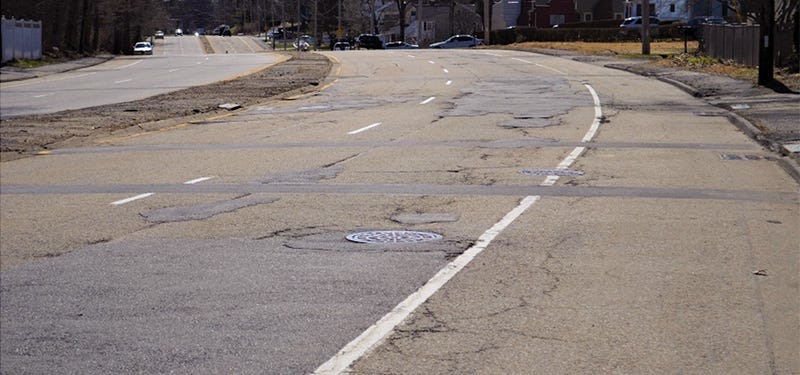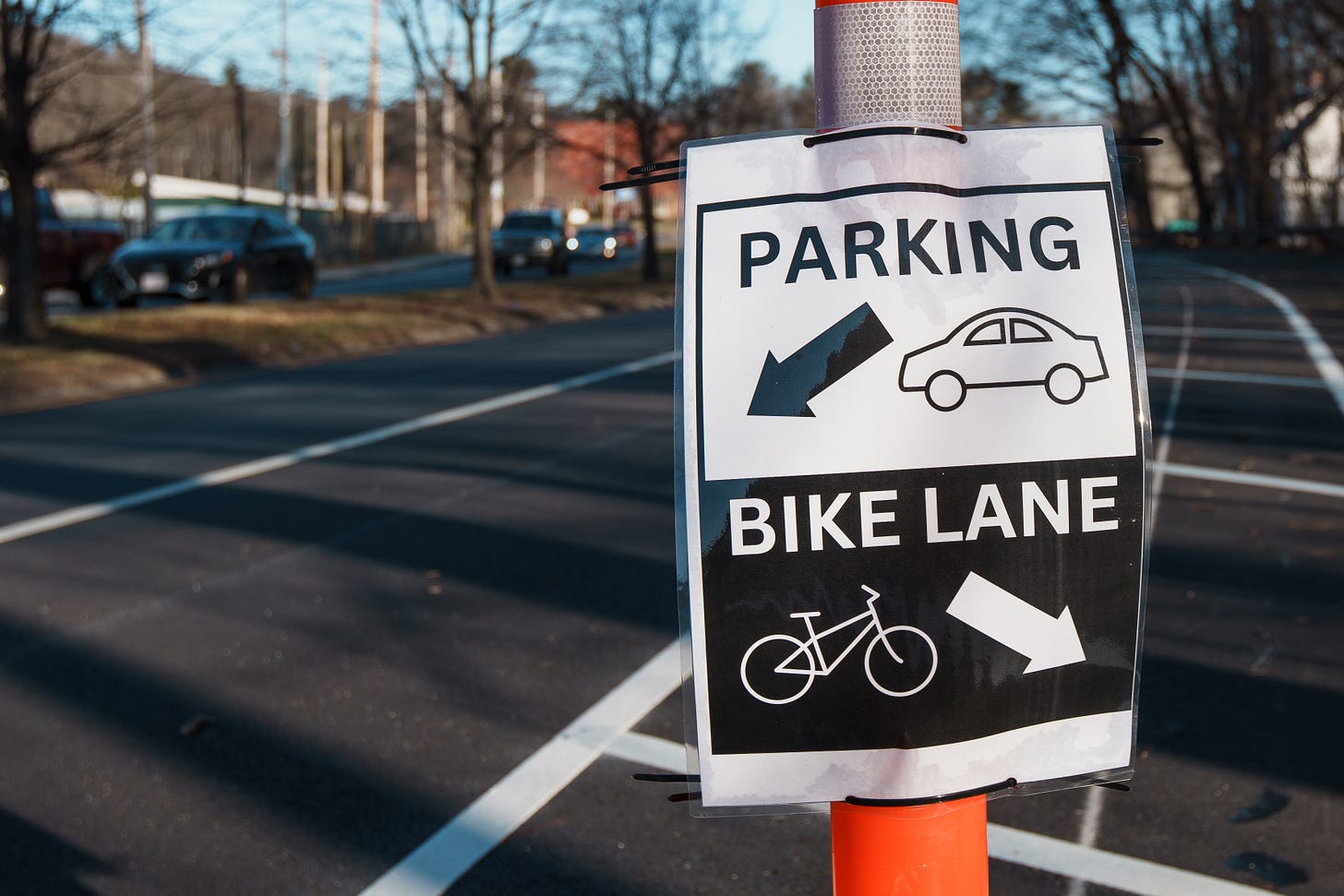Transitioning “the Speedway” into a Complete Street
Beyond bike lanes: Answering questions about Mill Street
I am not exaggerating when I say that Mill Street was a four-lane highway. On top of its deteriorating surface, its layout discouraged other modes of transportation, posed safety risks, and diminished access to recreational facilities.
Today, I am pleased that initial improvements are just about complete, and I am looking forward to an even more transformational project in the future that will unlock Mill Street’s potential as a walking, transportation, recreational, and economic opportunity corridor as we seek to become a greener, more accessible city.
This first phase of Mill Street improvements was made possible through interdepartmental collaboration among the municipality and the leadership of Commissioner Jay Fink and the Department of Public Works & Parks (DPW&P) and Commissioner Stephen Rolle and the Department of Transportation & Mobility (DTM). I would like to recognize the Mayor and City Council for their support, as well as the Department of Sustainability & Resilience, Executive Office of Economic Development, Division of Public Health, Police Department, and Fire Department for all their contributions to Worcester’s Complete Streets policy and quality of life projects.
There has been a lot of public discussion about Mill Street, whether it be on social media, at City Council and neighborhood meetings, or in the press. For this edition of “The Buzz,” I want to expand on the video and answer a series of the most frequently asked questions we’ve received, both during and after the work.
Did people really drive that fast on Mill Street?
Yes. Fifteen percent of motor vehicle traffic traveled at speeds of 45 MPH or higher. That’s at least 15 MPH above the posted limit of 30 MPH.
Not only was speed a concern, but from 2018 – 2022, Mill Street experienced a crash rate that was 43% higher than the state average for similar roads. Of the 269 reported accidents, 23% resulted in injury or possible injury.
How will these improvements change that?
Reducing the number of lanes from four to two is what’s known as a “road diet.” Experience elsewhere in the state and around the country shows that road diets can cut the number of crashes nearly in half. With fewer lanes, drivers travel at lower speeds, and pedestrians have an easier time crossing the street. In fact, we are already seeing the reduced speeds we anticipated.
So, speeds and crashes will go down, but won’t fewer lanes cause more congestion?
It might be a little counter-intuitive, but that’s actually not the case. In fact, we’ve seen time and again that adding lanes can cause more congestion due in part to sparking higher demand. What we did at Mill Street is resize the space allotted for road travel to more efficiently accommodate usage. In other words, the amount of traffic carried by Mill Street is far less than the capacity it was designed for as a four-lane roadway. In addition, Mill Street was already a two-lane roadway at either end of the corridor.
You said these changes go “beyond bikes lanes,” but why did you add one? I didn’t see a lot of bikers on Mill Street.
There are more bike and micro-mobility riders out there than people realize. But that said, by adding a bike lane, demand increases because riders now have a dedicated space to safely travel. It’s a more welcoming environment. This is especially true when you look at our overall bike network, which is still developing across the city. Until a system of comfortable, safe bike facilities is in place connecting people to places they want to go, the number of bike users will remain limited.
Bike lanes also carry added benefits. They separate pedestrians from moving vehicles, prevent vehicles from parking on and blocking sidewalks, and even reduce crashes—not just crashes involving bicycles, but of all types.
Further, adding bike lanes is part of Worcester’s Complete Streets policy, which directs the municipality to add safe and convenient accommodations for all users where there are opportunities to do so. The Mill Street repaving was one such chance to create separated accommodations for cyclists and micro-mobility users through lane marking.
Back up, what is this Complete Streets policy?
Worcester’s Complete Streets Policy was developed by the municipal administration and endorsed by the City Council in 2018.
At a high level, the concept of Complete Streets is to design our roads to be safe, convenient, and equitably accessible for people of all ages, abilities, and socioeconomic status. That means building and maintaining them to be inclusive of any mode of transportation/mobility: walking, driving, wheelchair, biking, etc. Complete Streets incorporates elements like bike lanes, Americans with Disabilities Act (ADA) compliant streets and sidewalks, and other traffic calming measures. But they’re not just about the road. Successful Complete Streets projects involve green infrastructure, recreational access, and even increasing access to businesses.
There are three types of Complete Streets projects:
Pilots are short-term projects involving temporary or semi-permanent materials deployed to educate the public and test out new ideas.
Interim measures are intermediate projects using pavement markings, semi-permanent materials, and limited curb alignments to make safety and access improvements pending long-term redesign and reconstruction projects.
Permanent projects are large-scale projects that involve an extensive planning and design process and implement permanent materials.
Mill Street is an interim Complete Streets project.
If Complete Streets includes better walking access, why didn’t the project include sidewalk improvements?
Interim projects like Mill Street are incorporated into DPW&P’s regular pavement preservation work. Since the new pavement is already going down, we can take advantage of redrawing the road’s markings.
This project involved conducting maintenance activity to immediately restore the surface of the roadway, given its advanced deterioration. Due to the quick timeline, it was not feasible to design and fund sidewalk improvements as part of the work. Now that the road surface is repaired, we can plan long-term, permanent improvements, such as sidewalks and more pedestrian crossings.
The good news is that we are aiming to replace much of the existing sidewalk as part of a future construction project on Mill Street…
Wait, a redesign of Mill Street is still to come?
It’s a few years away, but yes. We want to reimagine Mill Street as a multi-modal corridor connecting Tatnuck Square, Worcester Regional Airport, Webster Square, and Main South. It can be activated as a vibrant hub for recreation and economic development, merged with safety, sustainability, equity, and livability. Picture car lanes separated by a full community greenway with a bike and walking path running from Logan Field to Coes Park and beyond. We can improve our roads while also expanding the urban tree canopy—which in turn can reduce the heat island effect.
But first, we need to secure funding. My office jumped into action early this year when we were informed that Congressional earmarks were open for applications. We only had about two weeks to develop an application request for $2 million. My office worked closely with DTM and the offices of Rep. Jim McGovern and senators Elizabeth Warren and Ed Markey and walked them through the proposed project so that they could present the request to their respective appropriations committees.
I am happy to report that our request made it through both the House and Senate committees, and now we are cautiously optimistic that the full appropriations bills will soon be passed and unlock the funding so that planning can begin. That will involve about two years of engineering design, public participation, and analysis before we break ground.
That all sounds very exciting. Will the public be involved in the process?
Yes, any project of that scope requires public input from the very beginning, and it will be sought before work begins.
Back to today, are the current improvements finished?
Almost. We will be installing solar-powered Rectangular Rapid Flashing Beacons at the crossing in front of Mill Swan Head Start to enhance the safety of students and their parents and guardians. Those beacons are shown to reduce pedestrian crashes while increasing vehicle yield rates by up to 98%.
The bike lanes will also get better visibility with the application of green paint where they cross side streets or a travel lane. That paint needs to be applied in the spring during warmer temperatures.
Are you adding more crosswalks?
We did add a new crosswalk at June Street, which goes beyond the typical scope of DPW&P repaving projects, so I want to thank them specifically for adding it. We also upgraded all existing crosswalks with ADA compliance enhancements.
Residents may petition their city councilor to add more crosswalks.
With winter here, how do you plan on plowing Mill Street?
Fortunately, this type of parking protected bike lane layout is not new to New England or other cold-weather areas. Boston, Burlington (Vermont), New York City, and Montreal are just some of the other cities where these designs already exist, so we have some great models to base our strategy off. Generally, if a snowplow encounters a parked vehicle, they will plow around it. DPW&P encourages all cars be removed from the roadway to allow complete plowing of the streets. As always, public parking garages will be open and free to the public during declared snow emergencies.
An interesting quirk is that a portion of Mill Street was made exempt from winter parking bans back in 1972. This is very unusual since almost every street in Worcester has some form of a winter parking ban to help crews plow snow effectively and efficiently. We are reviewing re-establishing a winter ban for the entirety of Mill Street, which will require City Council approval.
How are you going to make sure drivers know how to navigate Mill Street?
We believe in education before enforcement. As we implemented the new pavement markings, we distributed flyers at neighborhood association meetings and put them on parked cars to explain how the new layout works. We also built a webpage explaining parking protected bike lanes and installed a mobile speed radar so people could see how fast they were driving. We have since removed the radar and have begun targeted enforcement, and compliance is improving significantly.
Are other roads getting Complete Streets enhancements?
Burncoat, Grove, and Stafford streets are slated for future improvements as part of planned resurfacing work. We plan to host public meetings to discuss design changes proposed for both Stafford Street and Burncoat Streets with their respective district councilors.
Permanent Complete Streets improvements (which Mill Street will have in the future) are currently in design for three sections of Chandler Street and for Endicott Street near Crompton Park. We also received a grant from the Massachusetts Department of Transportation for improvements to Country Club Boulevard, and the planning and design process for that project will begin this winter.
Where can I find more information?
Our website is loaded with information about our Complete Streets plan, ongoing street and infrastructure projects, and everything you need to know about what DTM has planned. Check out the following pages for full details:




